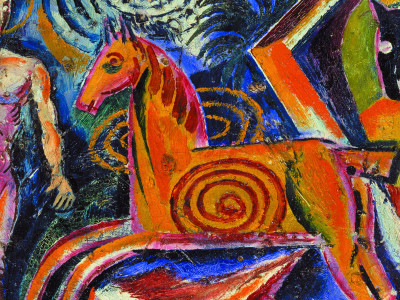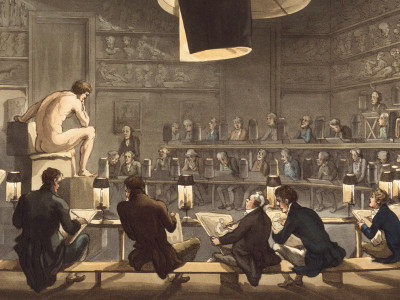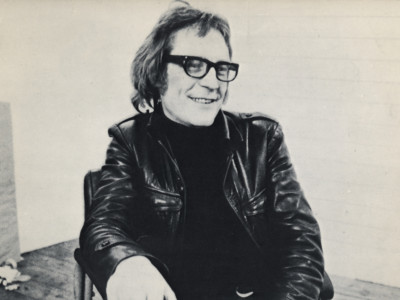
History uncovered: Britain's first arts organisation
By Mark Pomeroy
Published on 27 October 2015
A review of the RA Collection has turned up a vital historical document, the Royal charter of the Society of Artists. RA archivist Mark Pomeroy explains.
Before construction work started this autumn on the redevelopment of the Royal Academy, the permanent collection underwent an audit in preparation for this momentous phase of Burlington House’s history. As is often the case with large, historic and complex collections, the process has thrown up a few surprises.
Two 18th-century documents of central importance to early British art history have come to light after having been thought lost long ago. Found safely wrapped and boxed, stowed away in the RA’s sculpture store in the basement of Burlington House, and accidentally misclassified as "Artists’ Memorabilia" were the Royal charter and roll of obligation of the Society of Artists. The Society of Artists was Britain’s first formal artistic organisation, and so these documents embody the birth of corporate artistic endeavour in this country. Scholarly references to them had been fleeting, and ceased altogether by 1918. Now rediscovered in time for the Academy’s 250th anniversary, they can tell their story in full.
The early stages of organised artistic life in London are well known. A small group of artists, clustered around a life-class founded by William Hogarth, began to promote ideas for a formal "Academy" and in 1760 held Britain’s first exhibition of contemporary art. Spurred by this success they made plans to obtain a Royal Charter to elicit the King’s support, advertise their noble intentions and offer the prospect of enhanced professional status. George III was eager to be portrayed as a patron of British culture and happily agreed to help. On 25 January 1765 his Great Seal was fixed to the three vellum sheets comprising the charter (pictured) and an informal collective was transformed into the Incorporated Society of Artists of Great Britain.

The Royal Charter was a powerful instrument. It guaranteed various legal rights and bound the artists together under a sanctioned constitution. The Society’s members also subscribed their names to a written "Obligation". The RA has its own roll of obligation and it holds the signatures of every Academician, from the first President, Joshua Reynolds RA, to the most recent member, Peter Randall-Page.
The Society’s roll is strikingly similar in form, but with one shocking difference – it bears the scars of a dramatic schism. Dark brown ink strikes through a number of names, including Reynolds, Zoffany and Gainsborough – all struck off the list and recorded as "expelled". It is no coincidence that every one of these ejected artists became founders of the Royal Academy of Arts. The fascinating story behind the Academy’s foundation in 1768 is told by current Secretary and Chief Executive Charles Saumarez Smith in The Company of Artists, which lays bare the disputes that afflicted London’s artistic community in the 1760s. Sadly, as the RA flourished, the Society’s remaining members found themselves on the wrong side of history.
The Society of Artists held its final exhibition in 1791 after which to all intents and purposes it ceased to exist. In a twist of fate its archive, complete with charter and roll, was donated to the RA in 1836. The letters, minutes and accounts that form the bulk of this archive thus entered the Library and have since been an important part of the Academy’s manuscript collections. The rediscovery of these lost fascinating documents completes the archive once again – almost 250 years after the artists first gathered and subscribed their names to a dream of future glory.
The Library & Archive of the Royal Academy is open to the public by appointment (library@royalacademy.org. uk). white: a project by Edmund de Waal is currently on display in the RA Library and Print Room until 3 January 2016.
Read more about the redevelopment plans as the RA approaches its 250th anniversary.
Related articles

Visions from Ukraine
19 June 2024

10 RA Schools stories through the centuries
16 May 2024

In memoriam: Mick Moon RA
1 May 2024

